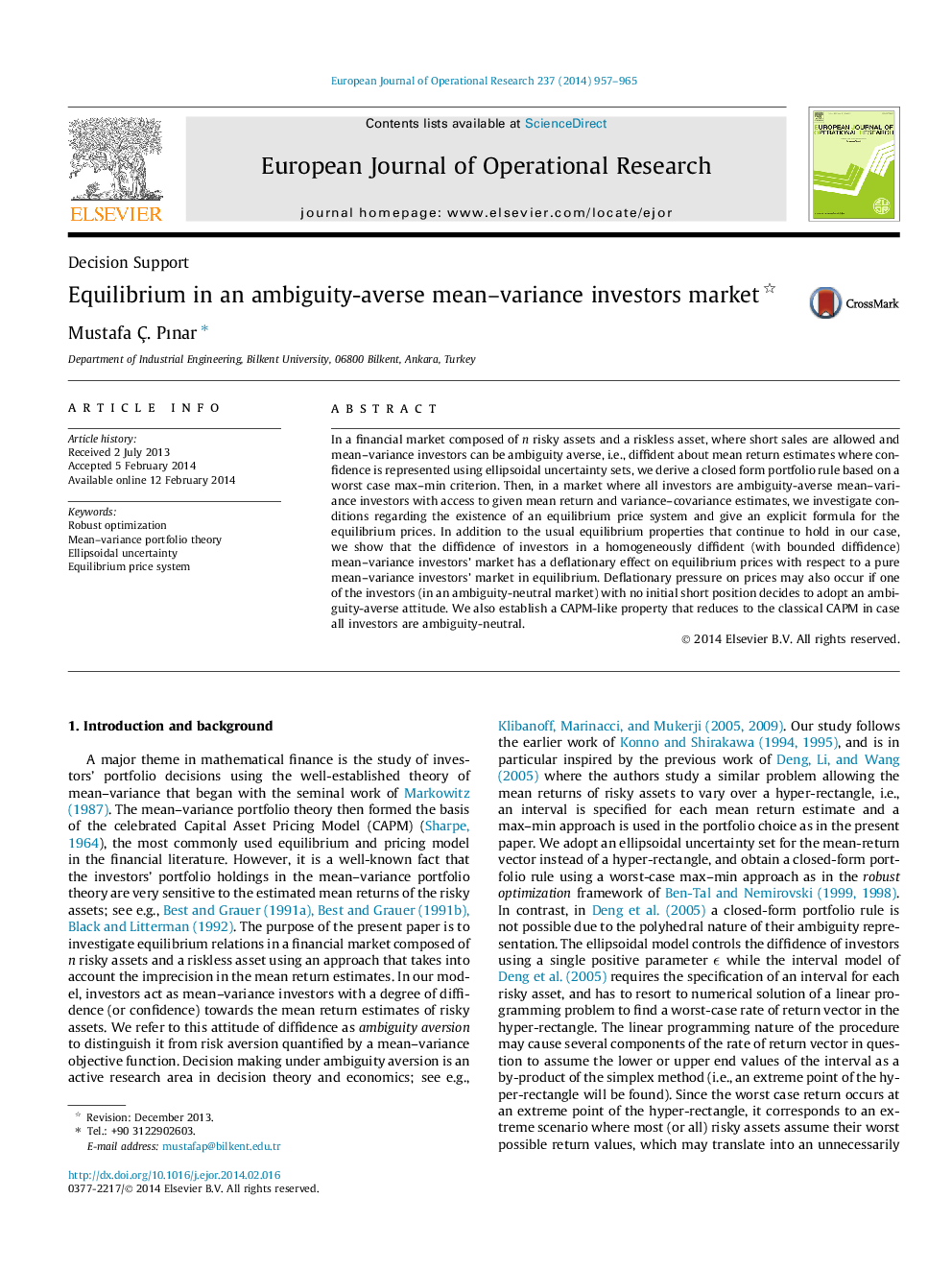| Article ID | Journal | Published Year | Pages | File Type |
|---|---|---|---|---|
| 479721 | European Journal of Operational Research | 2014 | 9 Pages |
•We investigate equilibrium implications of ambiguity aversion in a financial market.•The investors make portfolio decisions according to a mean–variance max–min rule.•Using a closed-form rule existence of an equilibrium price system are studied.•In a market in equilibrium ambiguity aversion creates downward pressure on prices.•Separation, proportionality and a CAPM-like property are proved.
In a financial market composed of n risky assets and a riskless asset, where short sales are allowed and mean–variance investors can be ambiguity averse, i.e., diffident about mean return estimates where confidence is represented using ellipsoidal uncertainty sets, we derive a closed form portfolio rule based on a worst case max–min criterion. Then, in a market where all investors are ambiguity-averse mean–variance investors with access to given mean return and variance–covariance estimates, we investigate conditions regarding the existence of an equilibrium price system and give an explicit formula for the equilibrium prices. In addition to the usual equilibrium properties that continue to hold in our case, we show that the diffidence of investors in a homogeneously diffident (with bounded diffidence) mean–variance investors’ market has a deflationary effect on equilibrium prices with respect to a pure mean–variance investors’ market in equilibrium. Deflationary pressure on prices may also occur if one of the investors (in an ambiguity-neutral market) with no initial short position decides to adopt an ambiguity-averse attitude. We also establish a CAPM-like property that reduces to the classical CAPM in case all investors are ambiguity-neutral.
